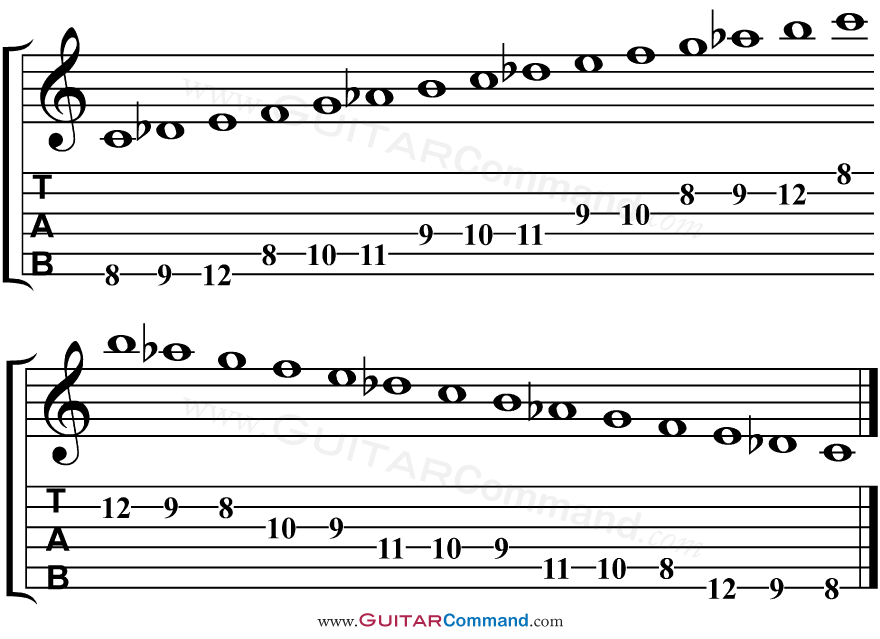The Gypsy Scale produces a rather beautiful, exotic sound that is seldom heard in western music. On this page you'll learn how to play the Gypsy scale on guitar (with notation, tab and fretboard diagrams), and you'll also find out about some similar scales.
You could use this scale when an 'eastern' sound is required, or – as its name implies – the Gypsy guitar scale is also reminiscent of Gypsy folk music.
- You can download a printable guitar scale ebook here: Guitar Scales Chart.
- Try out some more guitar scales at our main Guitar Scales Page.
As you can see from the music below, one feature of this scale is that it contains two augmented second intervals: the interval between the D flat and E, and the interval between the A flat and B.
Gypsy Scale Guitar Tab

If you study music theory, you'll know that an augmented 2nd interval is the same as a minor 3rd interval. On guitar this is a 3-fret leap: an interval more often seen in arpeggios than in scales.
Guitar Charts
The fretboard diagrams below show two ways of playing the scale on guitar, with roots on the sixth and fifth strings:


Gypsy Scale Scale Spelling
The scale spelling for this scale is: 1, b2, 3, 4, 5, b6, 7
Other Names
The Gypsy scale goes by at least two other names: the Double Harmonic Scale, and the Byzantine scale.
To make things more confusing, there are also other scales which go by the name of 'Gypsy Scale', these include the Hungarian Gypsy scale (which, strictly, is a mode of the Gypsy scale shown below), and the Spanish Gypsy scale.
Similarities / Relationships With Other Scales
You may have noticed that the Gypsy Scale has a similar sound to the Phrygian Dominant scale. In fact, there is just one note difference between them: the Gypsy Scale is the same as a Phrygian Dominant but with a natural, rather than a flattened, seventh note.
The scale spellings below should clarify this:
Gypsy Scale: 1, b2, 3, 4, 5, b6, 7
Phrygian Dominant Scale: 1, b2, 3, 4, 5, b6, b7
If you already know the Phrygian Dominant (many rock and metal players often use this scale), you could simply alter it by playing the natural, rather than flattened seventh.
Conclusion
I hope you enjoy experimenting with this scale. It is a scale that, if you drop it into a solo or composition, is sure to get noticed.
The one note that differentiates it from a Phrygian Dominant scale makes all the difference, making an already characterful scale sound even more exotic.
- Learn more guitar scales here: Guitar Scales
- Download a printable PDF scales book here: Guitar Scales Chart Book
- Learn unusual scales here: Exotic Guitar Scales



Learning the gypsy scale now, thanks in part to this page! Am interested in learning what chords to play in this scale; so far (using D as tonic in this example), we’ve figured they might be D, Eb, f#, g, A-5, Bb+, c#°-3?
Phrygian Dominant Scale: 1, b2, 3, 4, 5, b6, b7
I think you got it wrong, the third is minor.
Phrygian Dominant Scale: 1, b2,b3, 4, 5, b6, b7
Hi,
Thank you for your comment, we like to be kept on our toes!
I think you’re referring to the Phrygian modal scale which has a b3 / minor tonality, rather than the Phrygian dominant scale, which has a major 3rd / major tonality.
Guitar Command Admin